Home » Uncategorized (Page 2)
Category Archives: Uncategorized
The Use of A Pivot Table
What is a Pivot Table?
Excel has a neat feature to input different values into one data set called a pivot table. A pivot table can allow you to then make calculations, comparisons, and trends from a large set. Accountants, Data Analysts, and managers of a product/service are occupational examples that may use a pivot table.
Examples
Below is an example of a pivot table in Excel, most likely based upon produce stock.
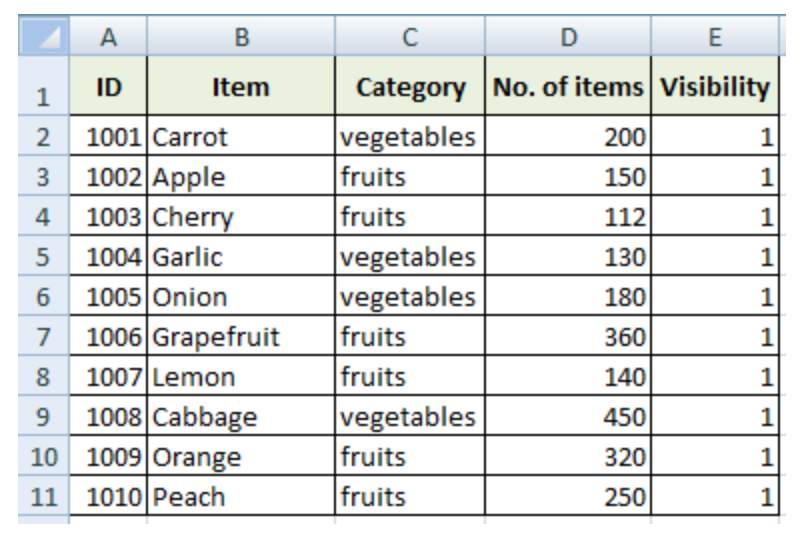
As you can see, there are multiple different categories highlighted in green, which include; ID number, item, type of produce, etc. This is a perfect example of a data set consisting of significant, organized values. Here is another example of a pivot table with an addition to interval of time category.
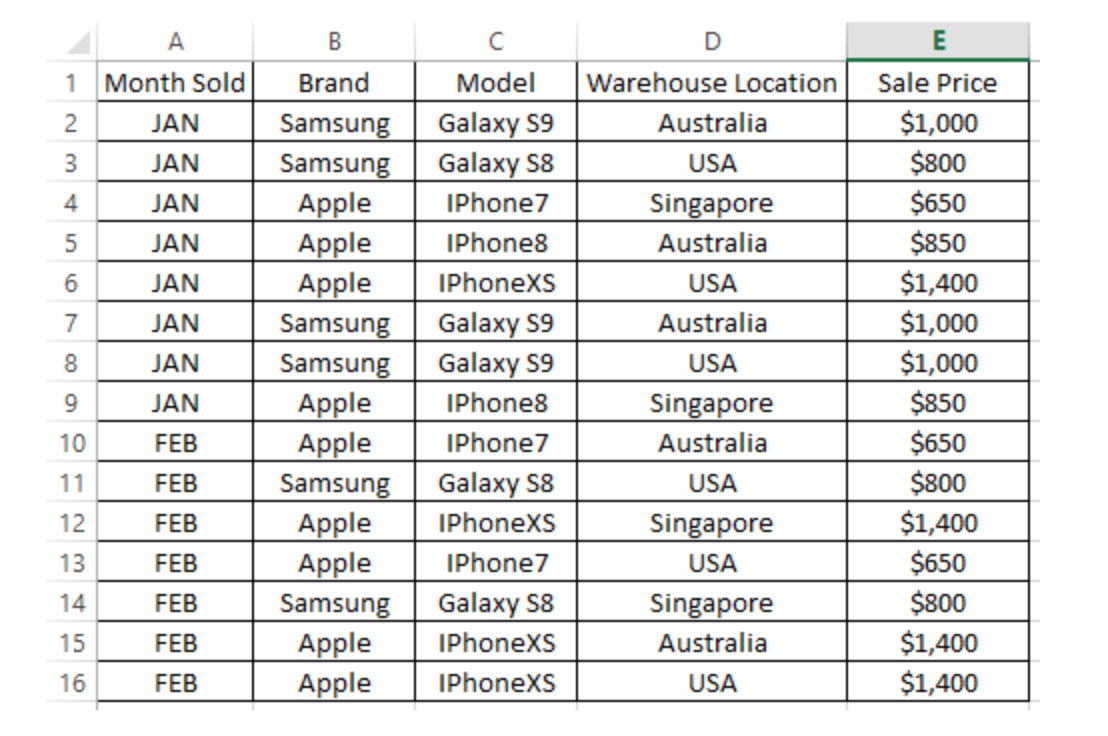
This example is based off two kinds of phones from two different brands. Throughout months of sales for these kinds of phone, plus in different locations, compares then the sales price. Notice how each row breaks down key components for this data example. People are able to compare maybe the prices amongst the different warehouse locations or maybe the Apple IPhone7 sold in U.S from Jan-Feb. Therefore, the business can make an analysis on future sales and/or adjustments to reach success and productivity.
Link to Create Your Own Pivot Table
What Energies Sources are Most Important
The National Academies of Sciences, Engineering and Medicine have a section of their website where they go over our energy systems. Below you can see each energy and where they go to be used and what energy remains unused.
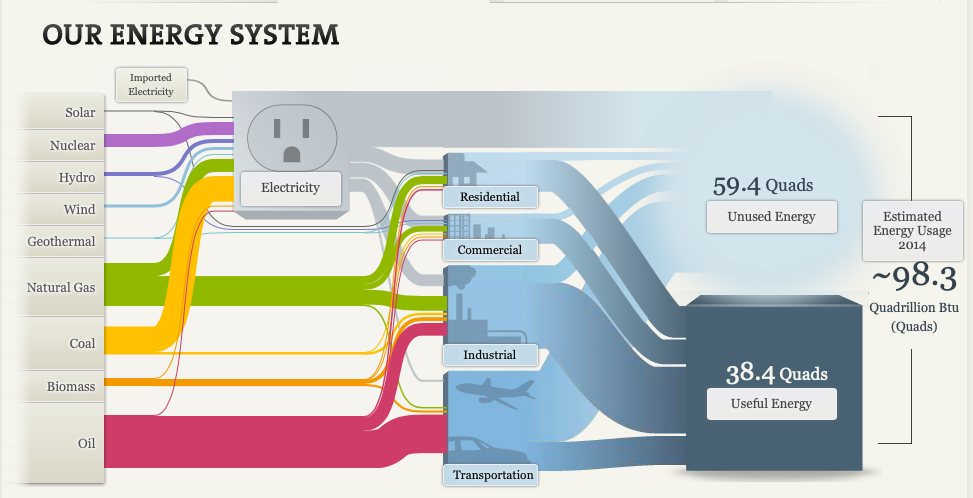
You may notice each line that connects one part of the visual to the next varies in size, this is no random occurrence. This visual adds different sized lines that lead from the energy source to where they’re used. Depending on the amount that energy source is used the larger the initial line, then it splits to more different sized lines depending on how much energy is used where. Below we can see that solar energy is rarely produced and used rarely anywhere, making solar energies line the thinest.
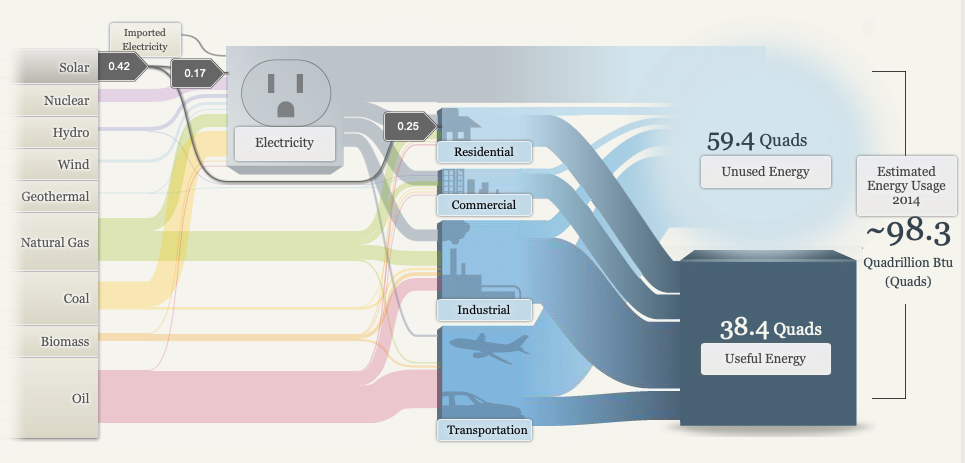
As we all know oil while its the most detrimental energy it is most commonly used making the line the largest and a majority of the initial line flows to transportation as we can see below.
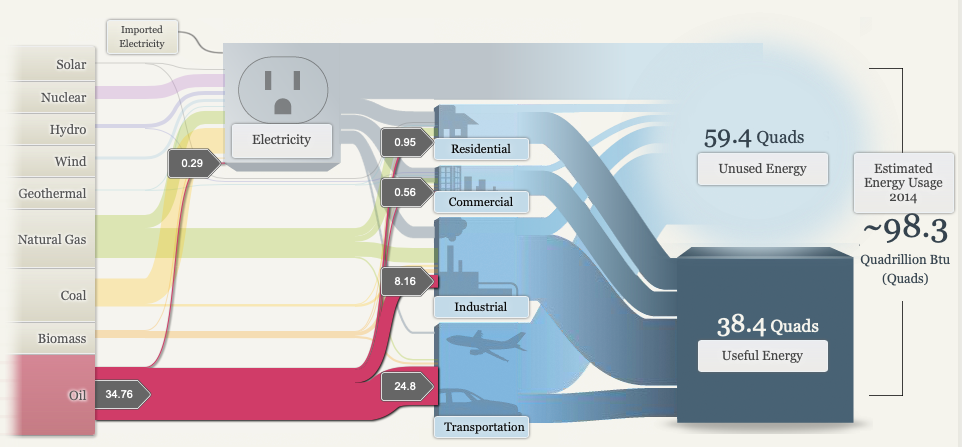
Overall this flow chart is very successful in making a clear presentation of where energies come from where they are used and what remains unused. The use of sizes, images, colors and the flowing pattern all add to the successfulness of this infographic.
SANKEY Data Visualization
The amount of energy used in American households, even wasted throughout the United States has always been astronomical. The diagrams created and provided by SANKEY not only shows the average US energy system, but cost and efficiency of small things like lighting.

The process of producing energy by coal shows just how much energy is wasted transporting all of it across the regions. Alone a third is shown to reach your household while the other two quarters are lost along the way which is mind boggling.
An interesting topic that seems to be growing more is LED lighting. LED lighting not only saves money on electricity but is a massive help to the environment. It not only reduces the harmful effects of consuming large quantities of energy but also does not have mercury.

This graphs shows the over the years Warm Light LED bulbs have decreased in price compared to Incandescent and CFL bulbs. Within five years the price alone has dropped $60, starting $75 to $15, a massive change like that can only mean good as the price convenience will convince people to purchase more of LED bulbs.
The Energy System charts showing the National Energy System of the whole nation, Regional System containing MD, OH, PA, and WV, and the State Energy System of California is inconvenient in my opinion as it seems he was trying to portray the data as an energy grid, but came across too confusing for researchers.
NeedToKnow
What I found:
I discovered that not all energy supplied is actually used, and that more than half is lost as waste heat or through inefficiencies. I’m sure I’ve heard that before sometime in my life but being reminded through this website really opens my eyes on how crazy the world works. So much energy wasted and we can’t do much about it.
I learned that we divide our energy use among four economic sectors: residential, commercial, transportation, and industrial. Things such as heating and cooling our homes, lighting office buildings, driving cars and moving freight, and manufacturing the products we rely on in our daily lives are all functions that require energy. Without energy, we can’t do any of the things listed above as well as many many more. Energy is a key tool and necessity in life and without it we would struggle a lot just like humans used to in the stone age.
I really liked how interactive their website was, even letting us choose what we want to click on in order to show that it’s our choice to choose what we want to know more about. It doesn’t throw in unneeded information or tries throwing a bunch of summaries at you, it lets you choose what you want to see and read next and that works really well. Their graphs were perfect, all very colorful and perfectly organized with the data and labels that they need. Also on these charts like I said before they would have these interactive tags to have use choose what we want to learn about next which was cool.
Sankey Visualizations
In 1898, Matthew Henry Phineas Riall Sankey developed the Sankey Diagram when he wanted to visualize the energy efficiency of a steam engine. Since then, Sankey diagrams have been used in many different ways across various fields of study to show flow over time between stations. For example, in the webpage titled, “What You Need To Know About Energy” by The National Academies of Sciences Engineering and Medicine, the Sankey diagram is used multiple times to visualize the flow of energy sources throughout the United States and in specific states such as California.
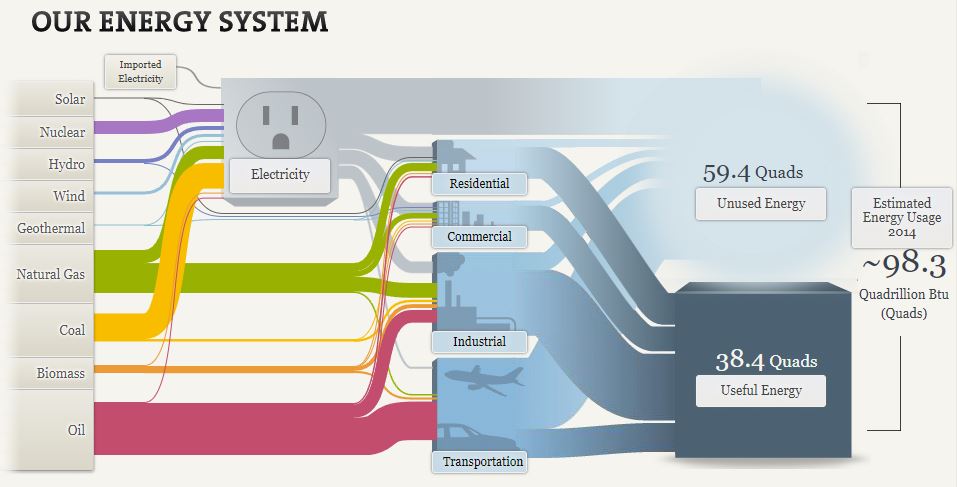
While this may seem very complex at first, it is really not too bad and it effectively visualizes the distribution of energy sources to their respective industries in 2014. It is very interesting to see how important the traditional oil, coal, and natural gas industries still are despite the large pushes towards renewable energies such as solar, wind, and hydro.

Another interesting thing I found on this site is the breakdown and visualization of CO2 emissions from each energy source. Of the nine energy sources, only three contribute to all of the U.S. CO2 emissions. They include, oil (43%), coal (29%), and natural gas (28%). This helps the viewer see and understand how the largest sources of energy are also the largest contributors of carbon dioxide emissions despite the “cleaner” alternatives that are available.
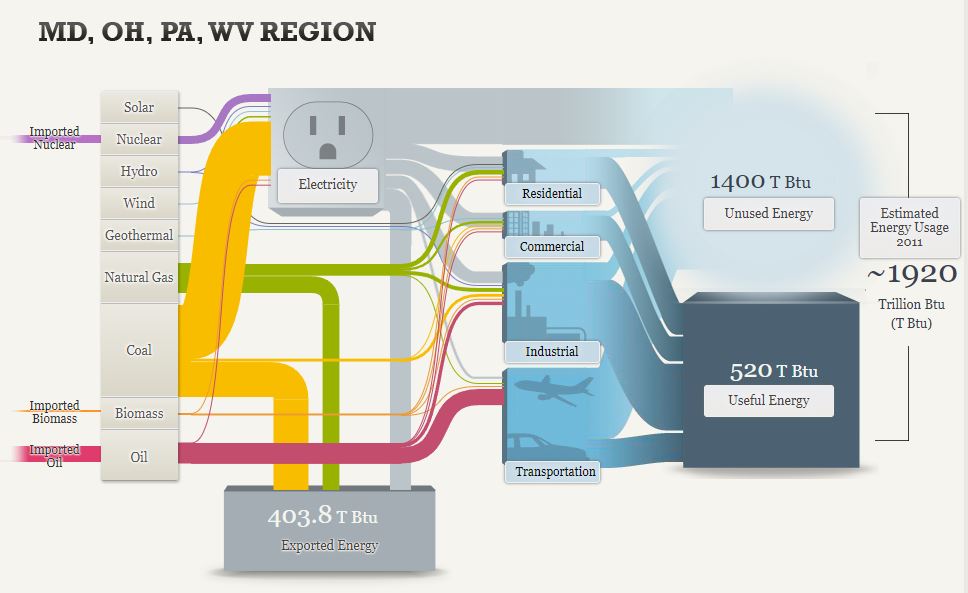
This Sankey diagram looks very similar to the first one but it is slightly different and covers the regional energy system of Maryland, Ohio, Pennsylvania, and West Virginia. In this diagram, it visualizes imports and exports as well as the general energy usage. You can see how the imported energy sources come in on the left and how they are distributed across the grid. It is also important to note how much energy is exported from this region through sources such as coal and natural gas. This is clearly shown from the divergence of these channels that contribute to almost 404 Trillion British Thermal Units of exported energy.
Overall, this is a very informative website that has great examples of effective uses of Sankey diagrams. There is a lot of good information about the energy systems of the United States but also more specific data on related topics such as energy efficiency and the pros and cons of different forms of lighting.
Takeaways of Energy System Website

My first interaction as I started the flow chart is I like the overall theme and organization of the chart, they created different sections based on the appropriate energy source as well as the envier rental areas it has because all these parts can cause a increase or decrease of the amount of energy being made and consumed.
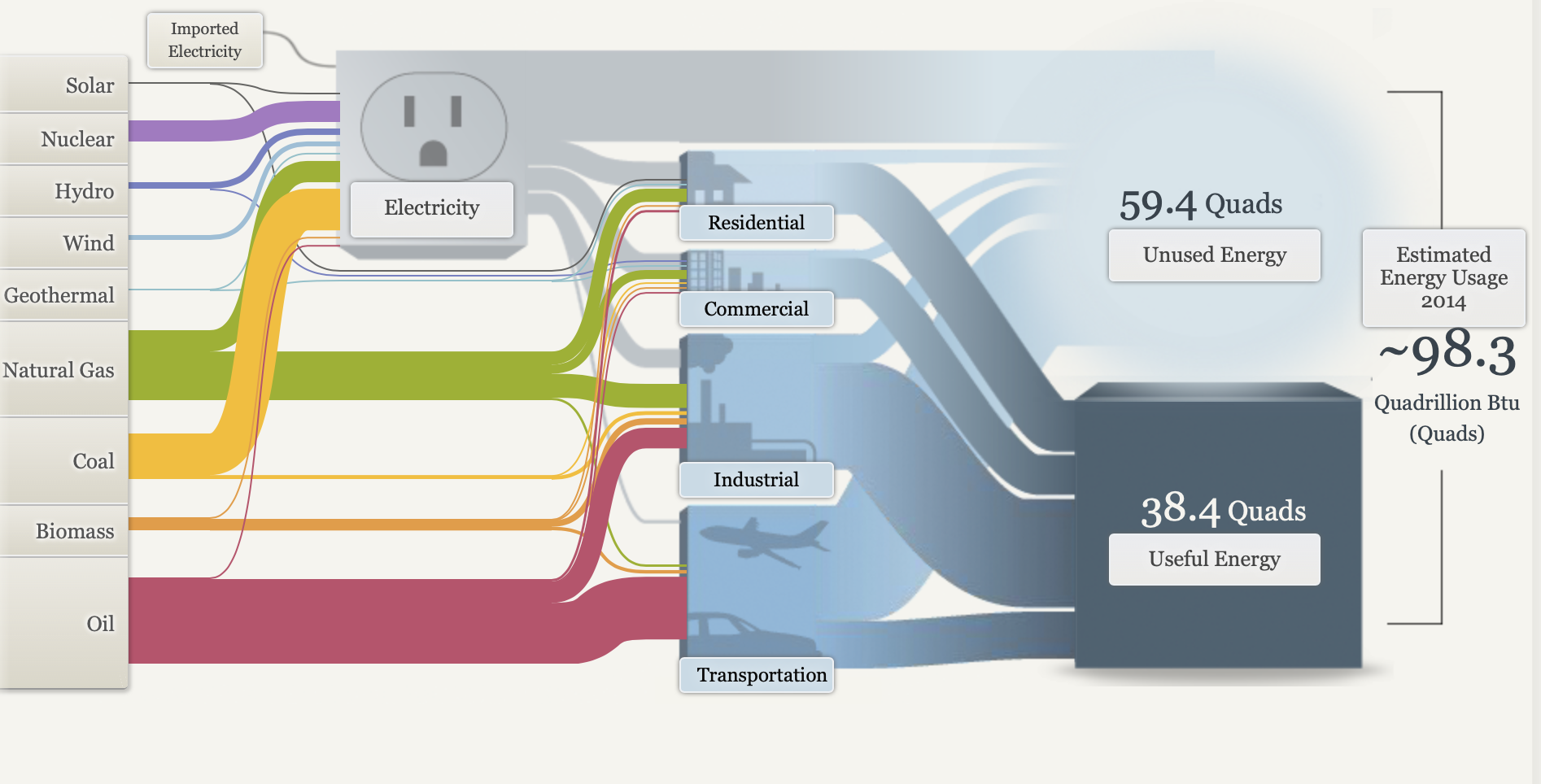
I also love how they give you a quick summary of the specific uses in the residential, commercial, Industrial, ad Transportation areas. Many people don’t know specifically how much energy it takes to power the specific 7. appliances in their house let alone all the other individuals and businesses in their communities.
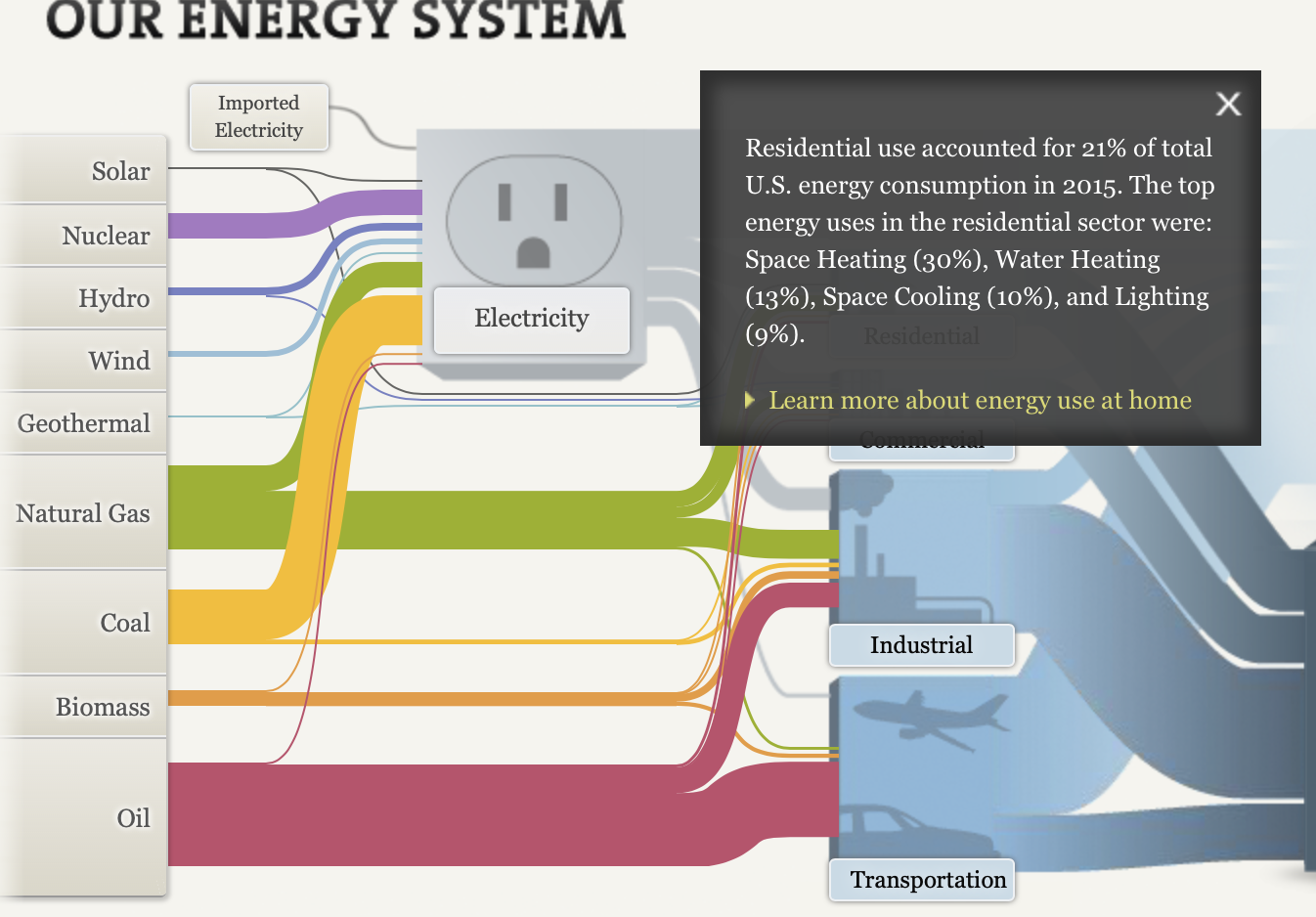
I also like how they broke down the the different sections between national, regional, and state(CA) because there is a major differentiations between each section and it is appropriate to show at least one state to show how much energy is consumed at a smaller population of individuals at still a high rate.
Overall I feel like they used a lot of visuals and simple explorational designs to help the viewer easily comprehend the extensive background behind energy, how it is obtain, maintained, and consumed by people to supply power.
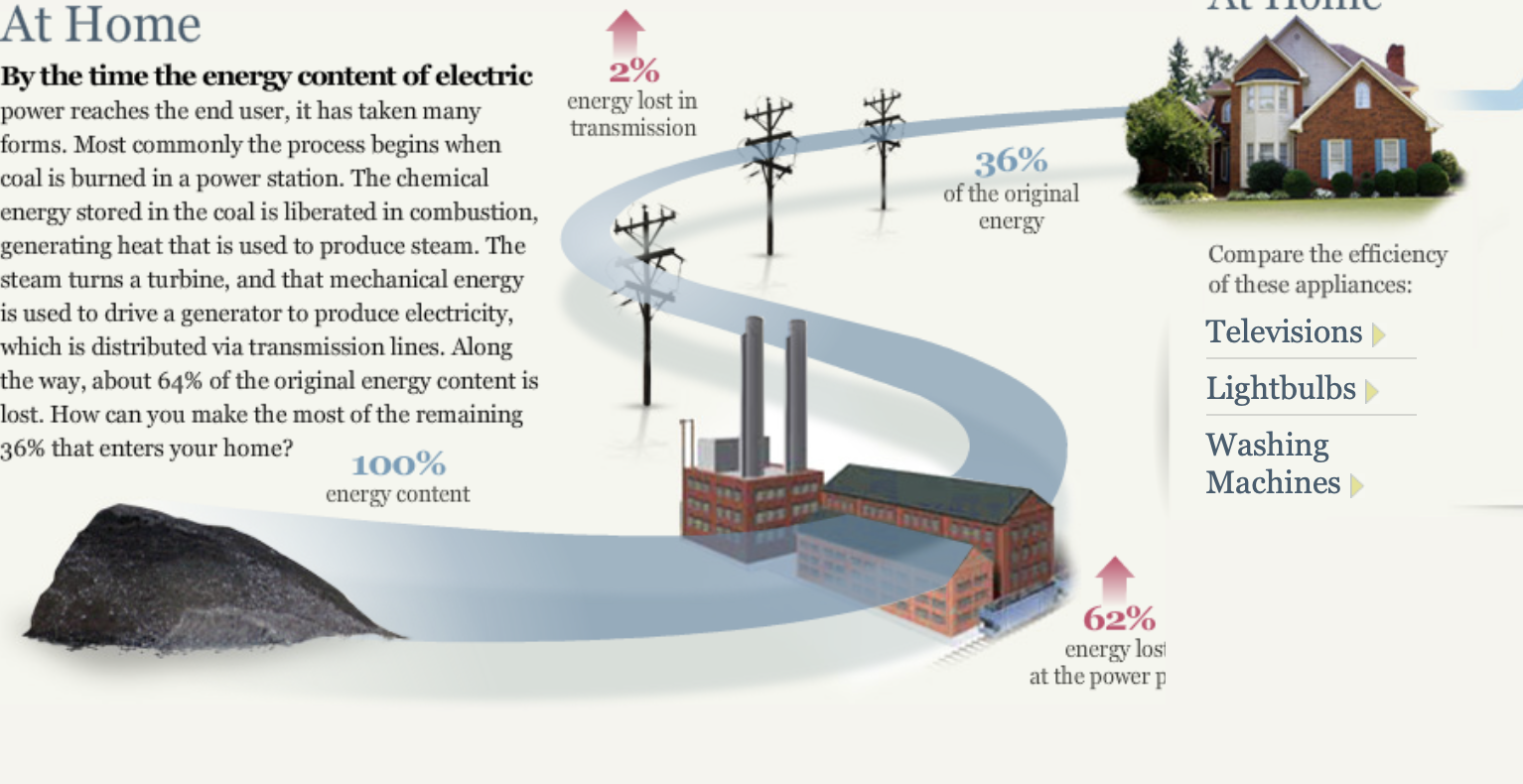
I also was interested in how they expressed alternatives to decrease the use of energy for the future through innovative and efficient technology. They provided simple visuals to separate each section and provide a visual representation of the overall information.
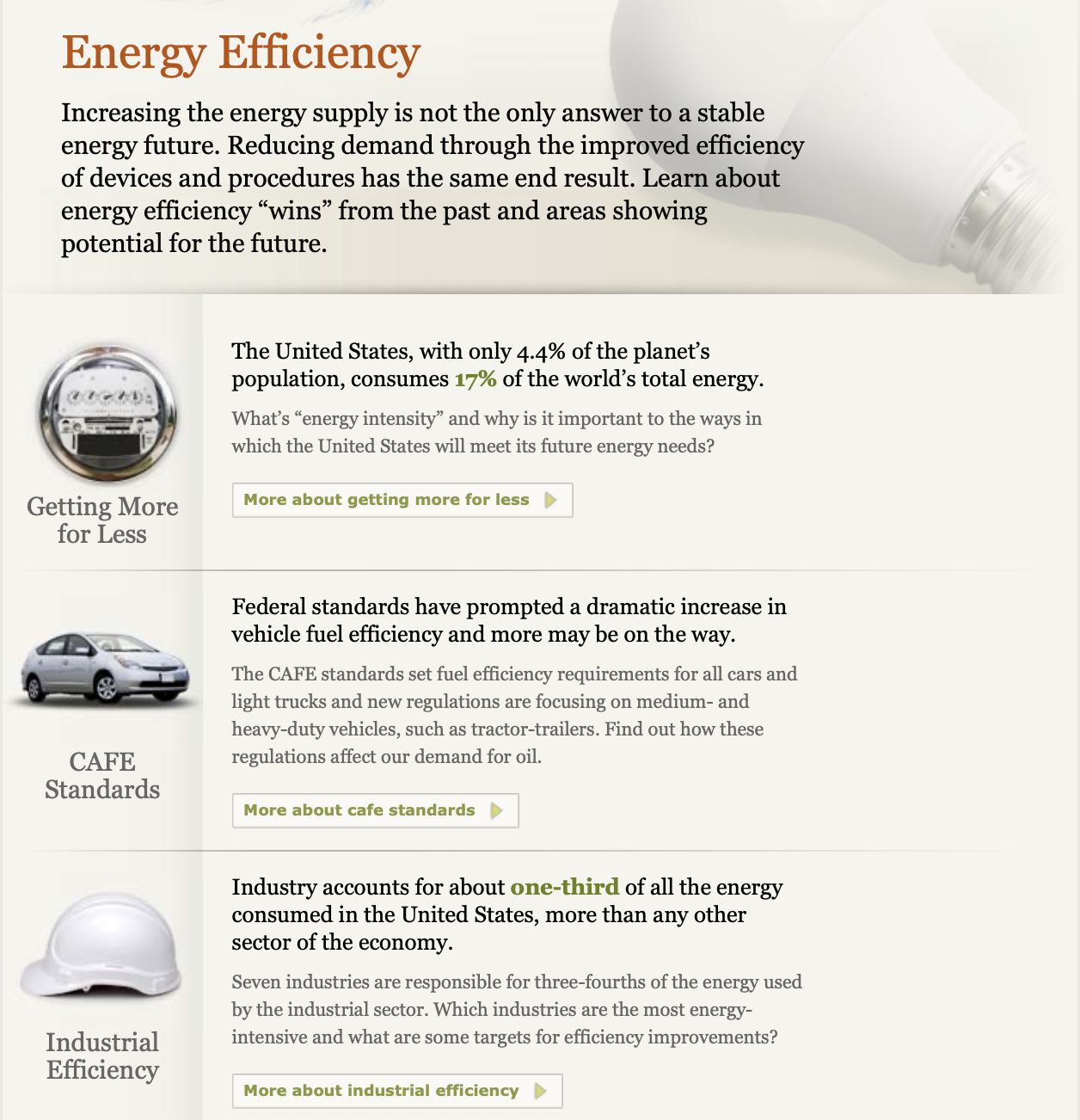
Sankey Diagrams
The production of energy is an incredibly complex topic. With so many factors at play (including sources, consumers, and amount used), it can be difficult to effectively visualize the data in one graphic. The National Academies of Sciences, Engineering, and Medicine maintain a collection of Sankey diagrams that attempts to depicts the energy system across the United States and more localized areas. Although not perfect, and at the cost of cohesion, they accomplish this goal.
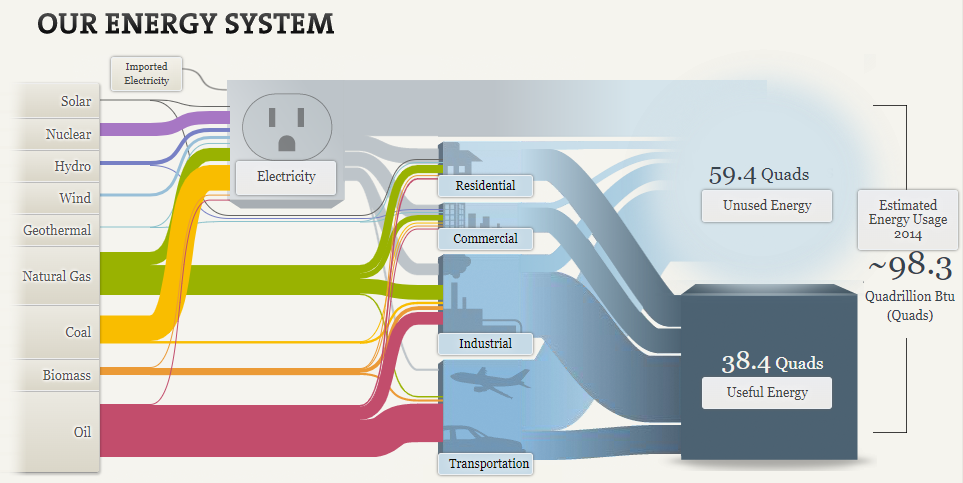
At first glance, the diagram appears overwhelmingly convoluted. It is important to realize, however, that this particular Sankey diagram combines three into one: the first shows the distribution of energy from its sources (in color), the second shows the distribution of electricity (in gray), and the third shows what portions are considered useful versus those that go unused (in blue).
To increase intelligibility, the diagrams let the viewer make particular selections. This highlights the one part and provides numerical data, both crucial for conciseness.
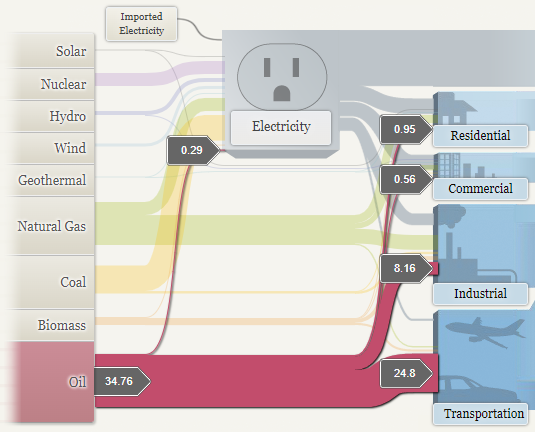
In addition, the number of separate diagrams introduces the possibility for even more information to be depicted, even going beyond what the diagrams show.
Immediately, one feature proves to be advantageous: it is easy to determine what the primary sources of energy are in each area. Further, this can be important in determining how reliant particular areas are on certain sources. For instance, California relies heavily on oil (most of which is used for transportation) whereas the other region relies more on coal (most of which goes into the production of electricity). In turn, these can go on to provide insight into the context of each area; coal use is more prevalent in an area where it is mined just as oil is used more in an area that is heavily populated and on the move.
Nevertheless, these Sankey diagrams could be improved. Consider, for instance, the percent of useful energy compared to the total amount produced. Although not provided, the values can be calculated as 39.1% nationally, 27.1% across the specified region, and 40.9% in California. These are all represented by dark-blue cubes of the same side, regardless of the varying percentages. Therefore, without doing the calculations and relying on the diagrams alone, one might be led to believe the ratios are consistent across the nation, regardless of scale.
That being said, these Sankey diagrams in particular highlight the issue that more energy is wasted as opposed to put to use. While this may be concerning, it is important to mind physical limitations of energy production. The diagram points out the following:
There are many opportunities to improve our nation’s energy efficiency, but it’s impossible to avoid losing some energy as heat when converting energy from one form to another. The principles of physics place upper limits on how efficient a heat engine, power plant, or oil refinery can be.
Retrieved from : needtoknow.nas.edu.
Sankey Visualizations
After exploring the following data visualizations about Our energy System, on the following link:

Sankey visualizations are discussed in the text to be a bit complicated but, overall I believe they are a great way to display information. After exploring this information about the energy system in the US, it is a very accurate and clear way to visualize multiple sources and forms of important data. Providing different percentages and estimated energy usage per year after pressing start the flow, was very informative and easily to understand complex data.
Further into the website, there is more information on energy and understanding the efficiency. They also give options to take a look at how energy is used at home and on the road. Offering very important and useful information about how we use energy at work, and at home.


The most interesting aspect of the website was the cost of energy, and the information provided about the environmental impacts. Increasing the importance of climate change for the future, and the visualization and information on energy, the costs, and the environmental impact is displayed efficient, and easily accessible.

Blog Post on Sankey Visualizations
What are Sankey Visualizations?
According to our text book, Effective Data Visualizations, Sankey visualizations are used to depict a flow throughout different stations over time. The author denotes how these diagrams capture flow from one point to another, and the thickness of those lines represent quantity. Here is the authors example in the text book for a better insight:
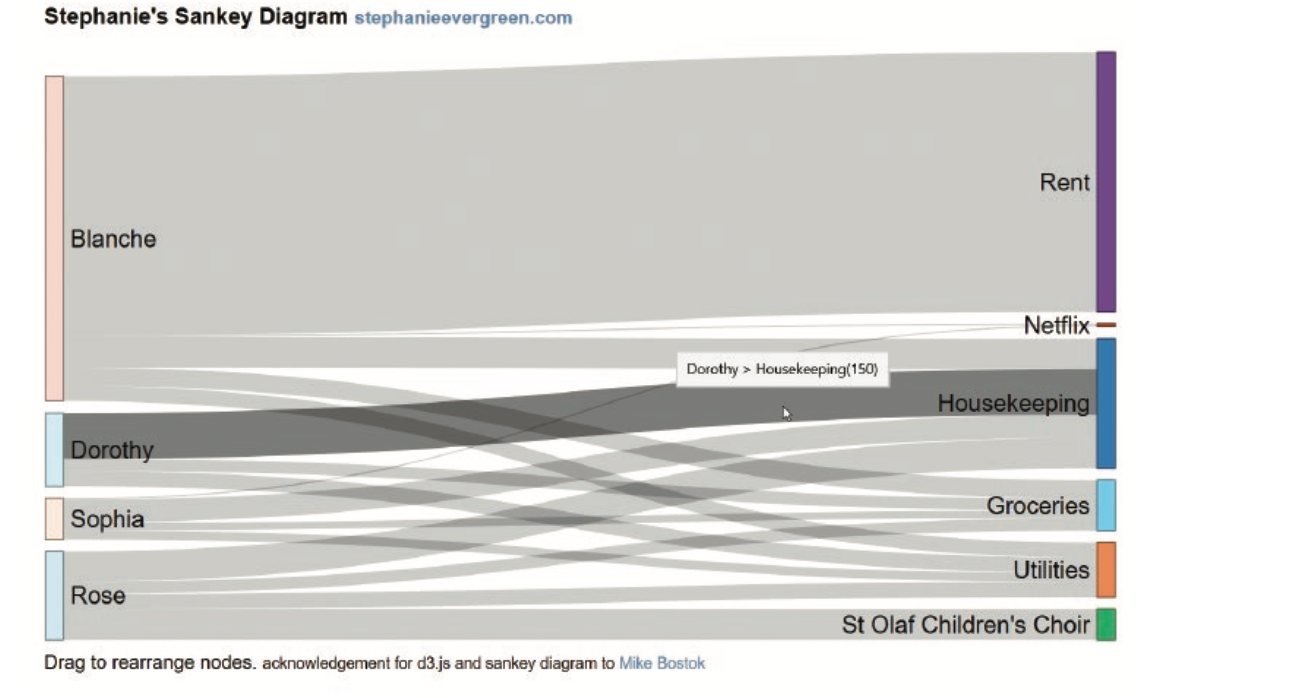
Essentially, these visuals are best used when there are multiple categories between multiple groups, as well as comparing time periods.
Website Review About Sankey Visualizations
What is another example in the real world that would use this type of visual? There is a website that discusses important and interesting information on energy. The title literally being What You Need To Know About Energy, link here: http://needtoknow.nas.edu/energy/interactive/our-energy-system/. The website is nicely organized with several pages, divided into different objectives on energy. The link will bring you right to a section called Our Energy System, which is where the Sankey Visualizations are demonstrated. Below is an image from the site of a Sankey Visualization
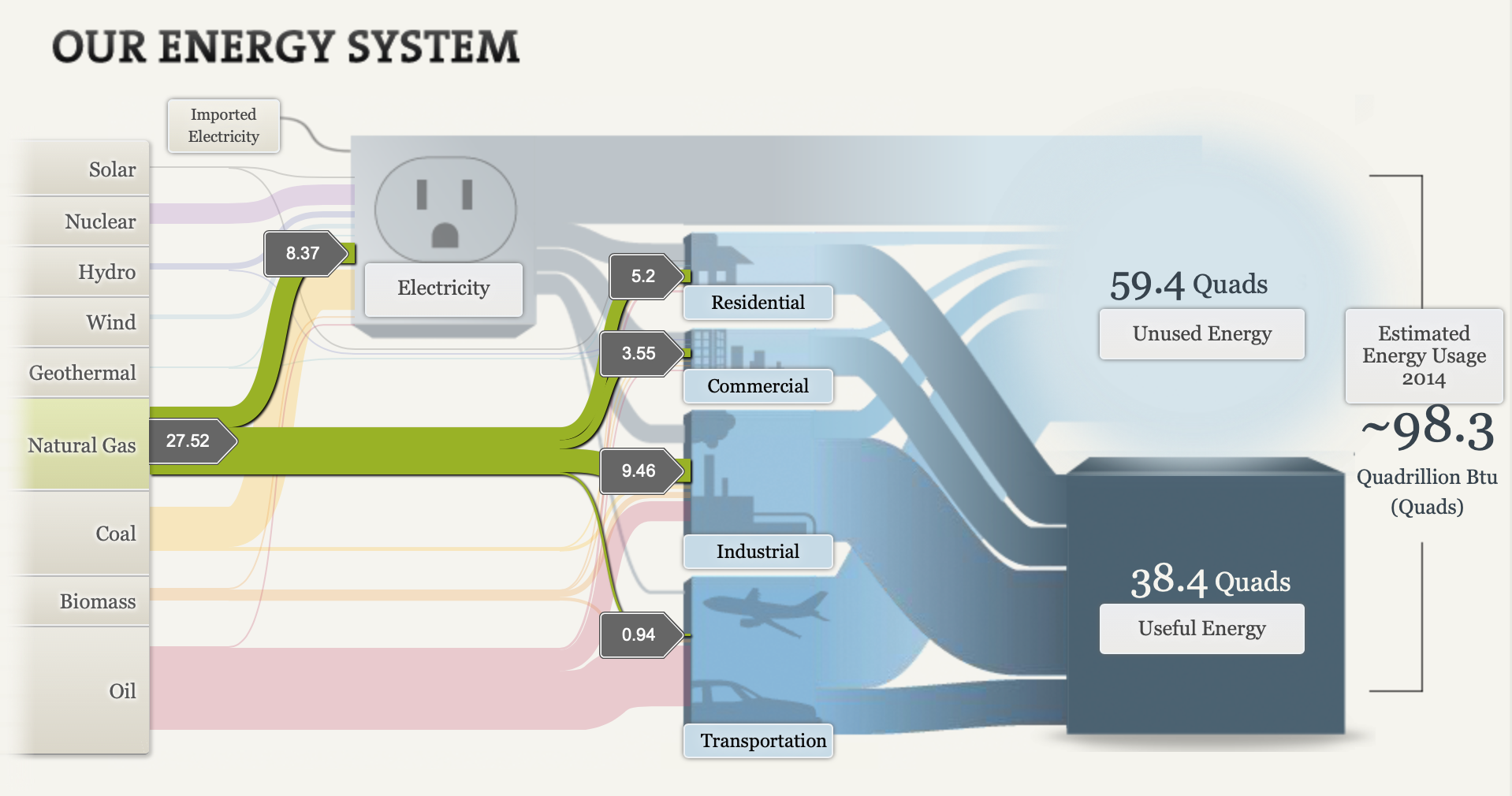
Notice: As you select one of the many categories, Natural Gas selected in this image, it guides you through its process. Those numbers in the gray boxes throughout represent number of quads, traveling along each area’s usage. Though this data was captured back in 2014, the Sankey diagram was a great tool for this example. It certainly captures the flow from one area to another, plus in a very neat way by clicking on different groups and highlighting its path. Not to mention, the website also provides other neat information on different pages, like seen here:
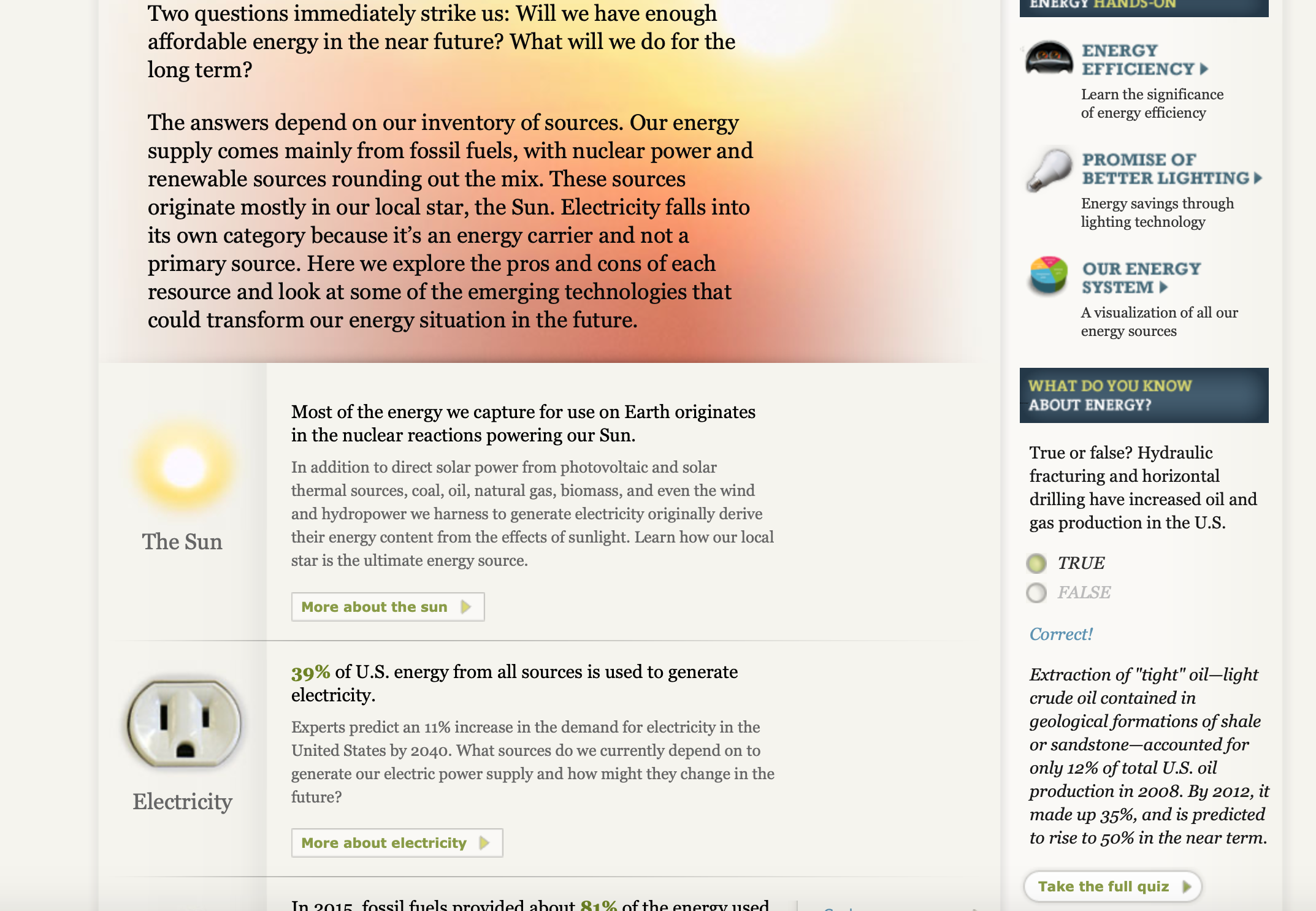
Personally, I like the way they designed the pages with visuals on the side and other information/quiz question on the side panel.
Conclusion
After going over the definition of a Sankey Visual in our text book, it is easier to acknowledge why the website chose that diagram. Overall, the website reviewed in this post helps better explain an idea the world uses everyday in the form of a Sankey diagram. The site also provides other useful facts and statistics throughout to learn more about. There’s bound to be other ways to implement this kind of visualization, so share other every day ideas that would make a great example for a Sankey Visualization down below!
References:
- ISBN: 9781071811832
Health Conditions
Wow this website was amazing, how it asks exactly what you’re looking for in terms of exact numbers of statistics or rather just an estimate, then once completing the questions a bunch of interesting graphs about all you can think of show up and you are just sitting there wondering which one you want to click on first. It has so many options between the risks you want to see, what you want to see of such as health conditions, as well as the data they provide, you can choose anything you want and you’ll have the information pop up for you.
Here is a screenshot of a data graph I chose on side effects of health conditions. Look how much information is provided! Incredible, it tells you how it is affected, what’s special about the graph itself, as well as how it does. Great website.
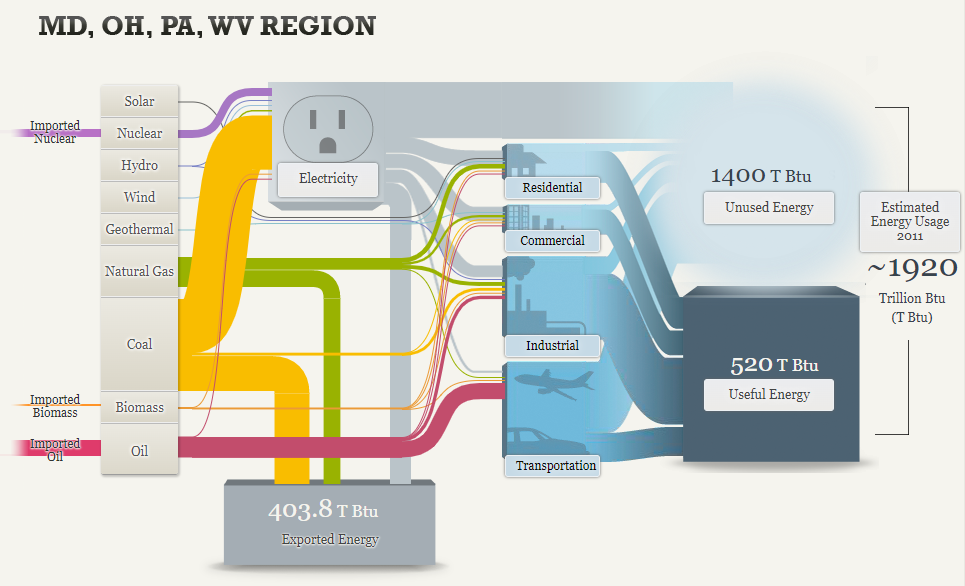
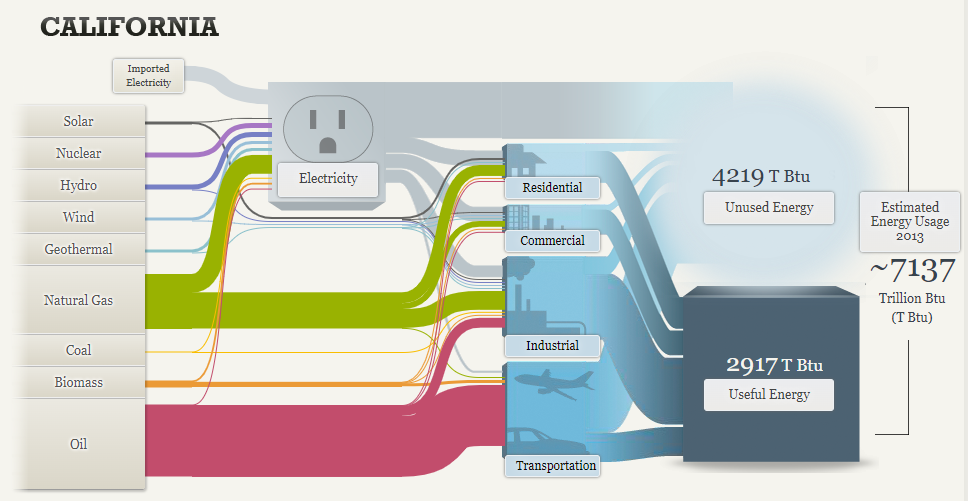
Recent Comments